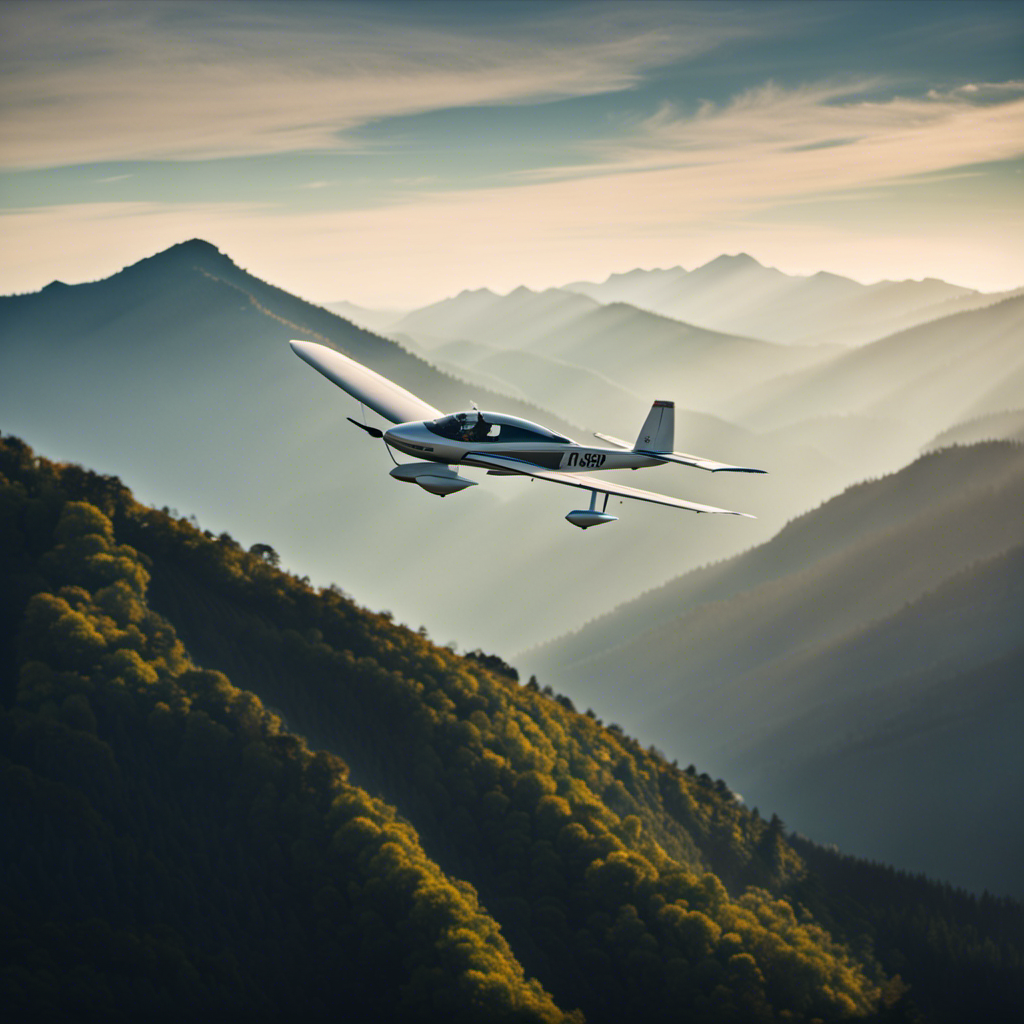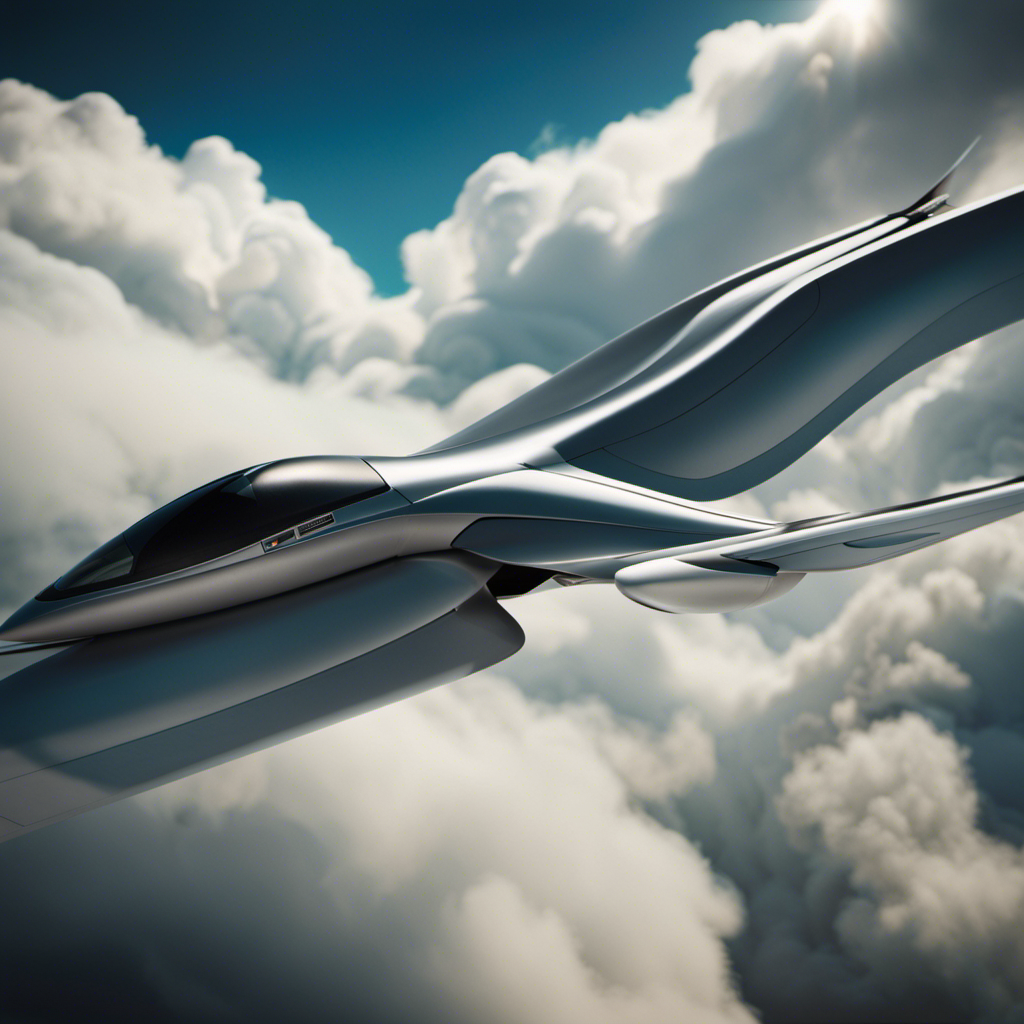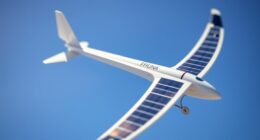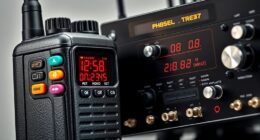Being an aviation enthusiast, I have always been fascinated by the combination of strength and elegance in airplanes.
Engine-powered gliders, with their unique blend of versatility and fuel efficiency, offer a thrilling experience like no other.
In this article, we’ll explore the pros and cons of these remarkable flying machines.
From enhanced safety features and increased accessibility to training requirements and performance limitations, we’ll delve into the technical details and objective analysis to help you navigate the skies with confidence.
So, buckle up and let’s soar into the world of engine-powered gliders.
Key Takeaways
- Engine-powered gliders offer versatility in flight, allowing them to take off and climb without the need for a tow plane or winch, providing flexibility in various weather conditions and extending flight time.
- Electric gliders provide impressive fuel efficiency, lower operating costs, and zero emissions, making them an environmentally friendly option.
- Advanced safety features such as warning systems, evacuation systems, and improved structural design contribute to industry growth and ensure safety and security.
- Advancements in technology and inclusive design principles increase affordability in aviation and allow individuals with disabilities to participate in gliding.
Versatility in Flight
You’ll find that engine-powered gliders offer you a wide range of possibilities in flight, allowing you to adapt and explore with ease.
Engine-powered gliders, also known as motor gliders, provide several advantages over traditional gliders. One of the main advantages is the ability to take off and climb without the need for a tow plane or a winch. This means that you can launch the glider from any suitable location, without relying on external assistance.
Furthermore, engine-powered gliders provide the flexibility to fly in various weather conditions. Unlike traditional gliders that heavily rely on thermal updrafts, engine-powered gliders can continue flying even in calm or turbulent weather. This allows you to extend your flight time and explore areas that may not be easily accessible with traditional gliders.
However, there are a few disadvantages to consider when using engine-powered gliders. The added weight of the engine and fuel can reduce the glider’s overall performance, making it less efficient when gliding without the engine. Additionally, the engine noise may take away from the tranquility experienced in traditional gliders.
Moving on to fuel efficiency, engine-powered gliders have made significant advancements in recent years, allowing for longer flight durations with minimal fuel consumption.
Fuel Efficiency
If you’re looking for fuel efficiency in a glider, opting for an electric model may be a smart choice. Electric gliders have made significant advancements in recent years, offering impressive fuel efficiency that surpasses their engine-powered counterparts. This is primarily due to the fact that electric gliders rely on battery power, which eliminates the need for traditional fuel consumption. As a result, electric gliders have lower operating costs and produce zero emissions, making them an environmentally friendly option.
However, it’s important to note that fuel efficiency is not the only factor to consider when choosing a glider. Electric gliders do have some performance limitations compared to engine-powered gliders. The most significant limitation is their limited range and endurance. Electric gliders are typically designed for shorter flights and may require frequent recharging, which can disrupt longer journeys. Additionally, the weight of the batteries can impact the overall performance and maneuverability of the glider.
Transitioning into the subsequent section about enhanced safety features, it’s crucial to consider the role that these features play in the overall performance of a glider. While fuel efficiency is undoubtedly important, safety should never be compromised. Electric gliders often come equipped with advanced safety features such as emergency parachute systems, collision warning systems, and improved cockpit designs. These features enhance the pilot’s safety and contribute to a more reliable and secure flying experience.
Enhanced Safety Features
Transitioning into the subsequent section, it’s important to consider the role of enhanced safety features in improving the overall flying experience. With advancements in technology, future developments and trends in aviation are consistently focused on enhancing safety measures. These enhanced safety features not only provide peace of mind to passengers but also contribute to the overall efficiency and reliability of the aircraft.
One of the key advancements in safety features is the implementation of advanced warning systems. These systems utilize sensors and data analysis to detect potential hazards and alert the pilot in real-time. By providing timely warnings, pilots can take necessary actions to avoid accidents or mitigate risks. Another significant development is the incorporation of enhanced emergency evacuation systems. These systems are designed to expedite the evacuation process during emergencies, ensuring the safety of passengers and crew members.
To visually showcase the importance of enhanced safety features, I have created the following table:
| Enhanced Safety Features | Benefits |
|---|---|
| Advanced Warning Systems | Real-time hazard detection |
| Enhanced Emergency Evacuation Systems | Expedited evacuation process |
| Improved Structural Design | Greater resistance to impact and turbulence |
These safety features not only enhance the flying experience but also contribute to the overall growth and sustainability of the aviation industry. As we explore the subsequent section about increased accessibility, it becomes evident that enhanced safety measures play a vital role in making air travel more accessible to a wider range of individuals, without compromising on security.
Increased Accessibility
Increased accessibility in aviation is being facilitated through advancements in technology and the implementation of inclusive design principles. These advancements have brought about increased affordability in aviation, making it more accessible to a wider range of individuals. With the development of more efficient engines and materials, the cost of flying has significantly decreased. Additionally, the use of inclusive design principles ensures that aircraft are designed with accessibility in mind, allowing individuals with disabilities to participate in aviation activities.
However, along with increased accessibility, there are also regulatory concerns that need to be addressed. As aviation becomes more accessible, there is a need for regulations that ensure the safety and security of all individuals involved. Regulatory concerns include issues such as pilot licensing, aircraft maintenance, and air traffic control. It is important to strike a balance between accessibility and safety, ensuring that individuals have the opportunity to participate in aviation activities while still adhering to strict safety standards.
Transitioning into the subsequent section about training and licensing requirements, it is necessary to establish a robust system that ensures individuals are adequately trained and licensed to operate aircraft. Training and licensing requirements play a crucial role in maintaining the safety and efficiency of aviation operations.
Training and Licensing Requirements
When it comes to operating engine-powered gliders, there are several key points to consider.
First, additional training is necessary to ensure safe and efficient engine operation.
Second, specific licensing requirements must be met in order to legally operate motor gliders.
Finally, a thorough understanding of maintenance and operation knowledge is essential to keep the glider in proper working condition.
These factors play a crucial role in the safe and successful operation of engine-powered gliders.
Additional Training for Engine Operation
Pilots should consider the benefits of receiving extra training for operating the engine in gliders. While gliders are primarily powered by wind and thermals, some models are equipped with engines for added versatility and safety.
The engine operation in gliders requires specific knowledge and skills that may not be covered in basic pilot training. Additional training in engine operation provides pilots with a deeper understanding of the engine systems, their maintenance, and troubleshooting. It also covers topics such as fuel management, engine start and shutdown procedures, and emergency procedures.
This specialized training ensures that pilots are well-prepared to handle any engine-related issues that may arise during flight. Moreover, it enhances their overall flight safety and allows them to make the most of the engine-powered features of the glider.
Moving forward, let’s explore the specific licensing requirements for motor gliders.
Specific Licensing Requirements for Motor Gliders
After completing the additional training for engine operation, it is important to understand the specific licensing requirements for motor gliders.
In order to legally operate a motor glider, pilots must obtain a specific type rating or endorsement on their existing pilot’s license. This type rating is necessary because motor gliders have unique characteristics that differentiate them from other aircraft.
The licensing requirements typically involve a combination of ground school training and flight hours specifically focused on motor glider operation. Additionally, pilots may need to pass a written exam and a practical flight test to demonstrate their proficiency in handling motor gliders.
Obtaining the specific licensing for motor gliders ensures that pilots have the necessary knowledge and skills to safely operate these aircraft.
Transitioning into the subsequent section about maintenance and operation knowledge, it is crucial for pilots to have a thorough understanding of the inner workings and maintenance requirements of motor gliders.
Maintenance and Operation Knowledge
To ensure safe operation of your motor glider, it’s important for you to have a solid understanding of the maintenance and operation knowledge required. Proper maintenance is crucial for the longevity and efficiency of your aircraft. Here are some maintenance tips and troubleshooting techniques to keep in mind:
| Maintenance Tips | Troubleshooting Techniques |
|---|---|
| Regularly check and replace engine oil | Monitor engine temperatures and pressures |
| Inspect propeller and engine mounts for wear | Troubleshoot electrical systems for any issues |
| Clean and inspect fuel lines and filters | Investigate any strange noises or vibrations |
| Check tires and brakes for wear and tear | Address any fuel system leaks |
Cost Considerations
If you’re considering flying engine-powered gliders, one thing to keep in mind is the cost. Engine-powered gliders can be a significant investment, and it’s important to carefully consider the economic implications before making a purchase. Here are some key cost considerations to keep in mind:
-
Initial Investment: Engine-powered gliders typically come with a higher price tag compared to their non-powered counterparts. The cost of the engine and the additional components required for powered flight can significantly increase the overall expense.
-
Fuel Costs: Unlike traditional gliders, engine-powered gliders require fuel to operate. The cost of fuel can vary depending on the type of engine and fuel efficiency. It’s essential to factor in ongoing fuel expenses when assessing the cost effectiveness of engine-powered gliders.
-
Maintenance and Repairs: Engine-powered gliders require regular maintenance and occasional repairs, just like any other aircraft. These costs can add up over time and should be considered when evaluating the overall economic feasibility.
-
Insurance and Licensing: Engine-powered gliders may require additional insurance coverage and licensing compared to non-powered gliders. These additional expenses should be factored into the overall cost analysis.
Considering these cost factors will help you make an informed decision about the economic viability of flying engine-powered gliders.
Now, let’s delve into another important aspect of engine-powered gliders: their noise levels.
Noise Levels
When flying with an engine-powered glider, you’ll notice that the noise levels can vary depending on the type of engine and its design. Engine-powered gliders generate noise pollution, which can have a negative environmental impact. The noise produced by these engines is a result of the combustion process and the movement of the engine components. Different engines have different noise characteristics, with some being quieter than others. Manufacturers are constantly working on improving engine design to reduce noise emissions.
Noise pollution caused by engine-powered gliders can have various environmental impacts. It can disrupt wildlife habitats and disturb animals, leading to changes in their behavior and even affecting their ability to find food and reproduce. Noise can also have negative effects on human health, causing stress, sleep disturbances, and even hearing loss. Additionally, excessive noise can impact the quality of life for people living near airports or flight paths.
As we transition into the discussion on performance limitations, it is important to consider the impact of noise pollution and the need for engine-powered gliders to meet noise regulations and standards. Noise reduction technologies and design improvements are critical in minimizing the environmental impact of engine-powered gliders while still providing efficient and reliable performance.
Performance Limitations
You may encounter certain limitations in terms of performance while flying with an engine-powered glider. These limitations can affect various aspects of the glider’s performance, including speed, maneuverability, and climb rate.
Here are some specific performance limitations that you might experience:
-
Decreased speed: Engine-powered gliders typically have lower maximum speeds compared to traditional powered aircraft. The added weight of the engine and fuel can reduce the glider’s overall speed capabilities.
-
Reduced maneuverability: The additional weight and drag from the engine can also affect the glider’s maneuverability. It may become less responsive and require more effort to perform certain maneuvers.
-
Lower climb rate: Engine-powered gliders may have a slower climb rate compared to non-powered gliders. The engine’s power output and the glider’s design can influence the rate at which it can ascend.
Despite these performance limitations, future developments in engine technology and glider design may help overcome some of these challenges. For example, advancements in lightweight engine construction and aerodynamic improvements could enhance the speed and maneuverability of engine-powered gliders.
Transitioning into the subsequent section about pilot experience and skill, it is important for pilots to be aware of these performance limitations and have the necessary experience and skill to optimize the glider’s performance within these constraints.
Pilot Experience and Skill
Transitioning into this section, it’s crucial for pilots to have the necessary experience and skill to optimize performance within these constraints. Pilot training plays a vital role in preparing individuals for the unique challenges associated with flying engine-powered gliders. A comprehensive training program ensures that pilots are proficient in handling the aircraft and are familiar with the specific operating procedures. Flight experience is also essential for pilots to develop a deep understanding of the aircraft’s capabilities and limitations.
During pilot training, aspiring glider pilots undergo rigorous instruction covering various topics such as aerodynamics, meteorology, navigation, and emergency procedures. They learn how to interpret weather reports, plan flights, and make critical decisions in real-time situations. Additionally, pilots gain practical experience through supervised flights, where they learn to take off, fly, and land the glider safely.
Flight experience plays a crucial role in building a pilot’s skills and confidence. As pilots accumulate more flight hours, they become proficient in managing the glider’s energy, optimizing performance, and making precise landings. They gain a keen understanding of how the glider responds to different inputs and develop the ability to anticipate and react to changes in flight conditions.
Future Developments and Trends
Looking ahead, it’s exciting to consider the future developments and trends in the world of engine-powered gliders. As technology continues to evolve, we can expect to see some significant advancements that will shape the future of this industry. Here are three key areas to watch out for:
-
Electric Propulsion: With growing concerns about environmental impact and sustainability, there is a rising demand for electric-powered gliders. Advances in battery technology and electric motors are making it possible to develop high-performance electric gliders that can compete with their traditional counterparts. These gliders will offer reduced noise levels, lower emissions, and increased efficiency.
-
Autonomous Systems: The integration of autonomous systems into engine-powered gliders is another exciting development. These systems will enable gliders to operate with minimal human intervention, enhancing safety and efficiency. With advancements in artificial intelligence and sensor technology, gliders will be able to navigate, communicate, and make decisions autonomously.
-
Enhanced Connectivity: As connectivity becomes increasingly important in our daily lives, it will also play a significant role in the future of engine-powered gliders. Improved communication systems will enable pilots to access real-time weather data, flight information, and navigation assistance. This connectivity will enhance safety and enable pilots to make more informed decisions during their flights.
These future advancements in engine-powered gliders are driven by market demand for more sustainable and efficient aircraft. As technology continues to progress, we can expect to see even more exciting developments that will shape the future of this industry.
Frequently Asked Questions
How does an engine-powered glider compare to a traditional glider in terms of flight versatility?
An engine-powered glider offers greater flight maneuverability compared to a traditional glider. It allows for more precise control and a wider range of maneuvers. However, operational costs may be higher due to fuel consumption and maintenance requirements.
What kind of fuel does an engine-powered glider use, and how efficient is it compared to other aircraft?
An engine-powered glider typically uses aviation fuel, such as avgas or jet fuel. In terms of efficiency, it is more fuel-efficient than traditional gliders, as the engine provides constant power.
What are some of the enhanced safety features that engine-powered gliders have?
Enhanced safety features in engine-powered gliders include parachute systems, stall warning systems, and advanced avionics for navigation and communication. These features enhance flight performance and ensure a safer flying experience.
How does the increased accessibility of engine-powered gliders benefit pilots and enthusiasts?
The increased accessibility of engine-powered gliders offers a myriad of advantages for pilots. From ease of use and reduced training requirements to enhanced maneuverability and longer flight times, these gliders revolutionize the flying experience.
Are there any specific training and licensing requirements for flying an engine-powered glider?
To fly an engine-powered glider, one must undergo specific training requirements and obtain the necessary licensing. This ensures that pilots have the knowledge and skills needed to operate these aircraft safely and effectively.
Conclusion
In conclusion, engine-powered gliders offer a unique and dynamic flying experience. The versatility in flight allows pilots to explore various altitudes and perform intricate maneuvers. With their fuel efficiency, these gliders ensure longer flights and reduced environmental impact.
Enhanced safety features provide reassurance to pilots, while increased accessibility opens up the world of gliding to a wider audience. Though training and licensing requirements are necessary, they ensure that pilots possess the necessary skills and knowledge.
While noise levels can be a concern, future developments and trends are focused on minimizing this issue. Overall, the performance limitations are outweighed by the exhilaration and satisfaction that engine-powered gliders bring to pilots.









